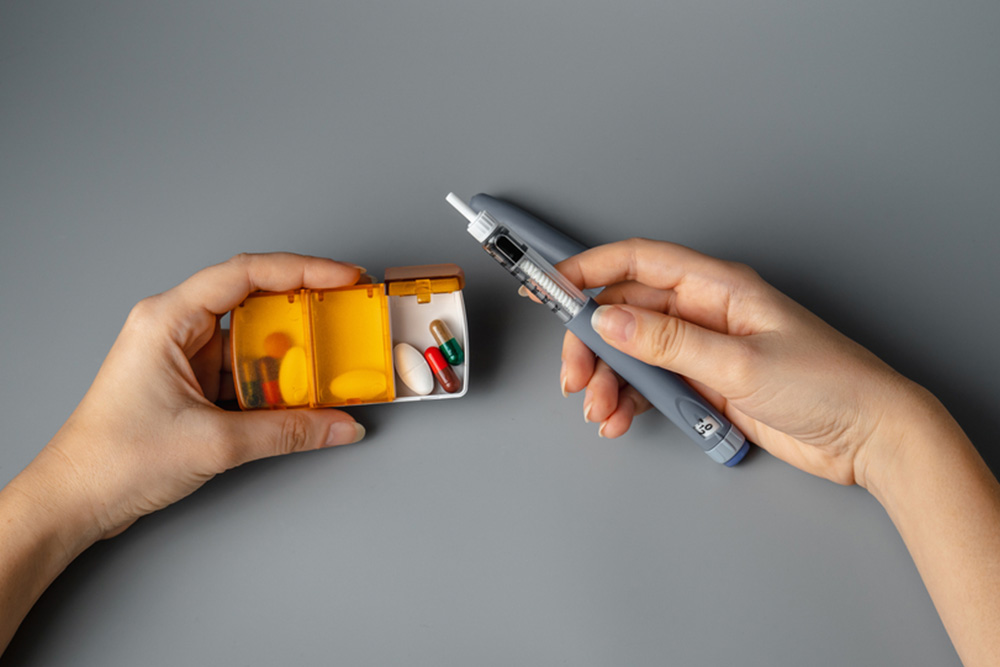
How to Prevent Prediabetes from Progressing?
Understandably, getting used to the lifestyle changes you need to control prediabetes can be difficult, but at Klinio, we know that the power of habit can make it easier for you. Let’s talk about how you can control your blood sugar levels and keep prediabetes at bay.
What Is Prediabetes?
Prediabetes is a medical condition where a person’s blood sugar level is higher than it should usually be but is lower than the blood sugar level needed to diagnose diabetes.
In many cases, prediabetes can become type 2 diabetes. A study found that after one year, nearly 40% of people with prediabetes were found to have blood sugar levels that classified as diabetes.
Blood Sugar Levels for Prediabetes
The blood sugar levels used to tell whether a person has prediabetes depend on the type of blood test they have done.
There are three main tests done to check blood glucose levels. These are:
- Fasting blood sugar test
- Oral glucose tolerance test
- Glycated hemoglobin, also known as HbA1c, test
Fasting Blood Sugar Test
This test checks for a person’s blood sugar after they have not eaten for at least eight hours. This is usually done in the morning, after what is called an overnight fast.
When testing for a person’s fasting blood sugar level, normal blood sugar levels are 99 mg/dL or lower.
However, for someone who has prediabetes, these numbers will be from 100 to 125 mg/dL. Anything higher than that is a sign of diabetes.
Oral Glucose Tolerance Test
The oral glucose tolerance test checks a person’s blood glucose before and after they’ve drunk a liquid containing a known amount of glucose. Similar to a fasting blood sugar test, you’ll have to fast overnight.
After drinking the liquid, your blood glucose will be checked at the one-hour, two-hour, and sometimes three-hour mark.
If your blood sugar is 139 mg/dL or less after two hours, your levels are normal. However, if it is above 140 mg/dL and less than 199 mg/dL, it can be diagnosed as prediabetes.
After two hours, anything higher than 200 mg/dL points to diabetes.
Glycated Hemoglobin Test
The glycated hemoglobin test, sometimes simply called the HbA1c test, provides a way to take a look at someone’s average blood glucose over the last two or three months.
This test is measured in percentages, with less than 5.7% being considered the normal range. You can know if you have prediabetes if the value is between 5.7 and 6.4%. Any number over 6.5% indicates diabetes.
How Can I Prevent Prediabetes?

If you’ve recently been diagnosed with prediabetes, it’s understandable that you might be scared of what lies ahead. A large percentage of people with prediabetes may end up developing type 2 diabetes.
However, if you take the proper steps, you can eliminate some risk factors and reduce the chance that you progress to diabetes.
This section will guide you through the different healthy lifestyle modifications you can make that will help you prevent prediabetes from progressing.
Lose Weight
Increased body weight, especially when classed as obesity, is one of the risk factors for prediabetes and type 2 diabetes. This is because fat cells release substances that cause insulin resistance.
Losing weight can be tough, truly, but it’s been found that losing even 5 to 10% of excess weight can prevent diabetes from developing.
Klinio has features that can be a helping hand for weight loss, such as meal plans and straightforward workouts.
Eat a Healthy Diet
Striving to stick to a healthy diet is one of the lifestyle changes that people with diabetes have to adapt to.
However, it can also be helpful for people with prediabetes to prevent it from advancing. One of the risk factors of diabetes is a diet with a lot of processed foods in it.
There are some foods you should try to reduce or remove from your diet. For instance, these include diets with a lot of:
- Red meat
- Processed meat
- Saturated fats
- Trans fats
- Heavily processed carbs
- Sugar-sweetened beverages
You can choose to eat a healthy range of foods, many of which can reduce the risk of prediabetes. Eat healthy foods in larger quantities, such as:
- Whole grains
- Fruits
- Vegetables
- Lean protein
- Healthy fats such as olive oil, sunflower oil, and those found in fish, nuts, and avocados.
Do More Physical Activity
It’s understandable how sometimes you just don’t want to get up from the cozy spot that you’re nestled in. However, it’s been shown that when you exercise regularly, there’s less of a chance of developing type 2 diabetes.
Physical activity helps you lose weight and stay fit, as well as keeps away heart disease, so it has other perks besides reducing the risk of prediabetes.
Having to go to the gym can make it harder to keep up being active. The good thing is that Klinio gives you several equipment-free workouts that you can do from the comfort of your home.
Reduce and Stop Smoking
When you start smoking, it can be hard to stop. You might have tried before but had little success, despite knowing that smoking is linked to many negative things like heart disease and high blood pressure.
Yet, one thing that few people know about smoking is that it also creates a high risk of insulin resistance developing.
It can be hard to quit smoking right off the bat, so you can get started by trying to cut down on how much you smoke every day. When you feel confident enough, you can switch to helpful products like nicotine gum or patches.
Drink Water Frequently
One of the easiest ways for you to battle prediabetes and stop it from moving to type 2 diabetes is to drink water.
Water helps keep your blood sugar levels well-regulated. It will also quench your thirst better than sugar-sweetened beverages, which can worsen your condition.
Use Medications When Prescribed
In some instances, the changes you make to your lifestyle might not be enough to help your prediabetes. Despite losing weight, eating more food like whole grains and vegetables, and being more active, sometimes your blood sugar level might not improve.
For people like this, your doctor may decide to prescribe prescription medications to help manage your sugar levels. Metformin is the primary choice of most physicians.
What Is the Main Cause of Prediabetes?

While the cause of prediabetes is not known, the mechanism behind it is clear. It is caused by insulin resistance.
The hormone insulin is used by the body to allow your cells to use glucose. Insulin resistance is when the cells no longer respond to insulin the way they are meant to. This makes the glucose levels in your blood increase, and when they get high enough, it is diagnosed as prediabetes.
What Gives Me a Higher Risk of Prediabetes?
Certain traits have been associated with a higher likelihood of getting prediabetes. These traits are known as risk factors.
There are quite a few of these for prediabetes and they include:
- A family history of type 2 diabetes, especially having a first-degree relative (i.e., a parent or a sibling) who has diabetes
- Being older than 45
- Being obese or overweight
- High blood pressure
- Being a woman with polycystic ovary syndrome
- Having developed diabetes while pregnant, a condition known as gestational diabetes
- Being sedentary
- Smoking tobacco
What Foods Cause Prediabetes?
No food can be said to cause prediabetes or type 2 diabetes. However, certain things in your diet can give you an increased risk of developing these conditions.
Here are some of the foods that you should attempt to avoid to reduce your risk:
- Red meat e.g., beef, pork, mutton, veal
- Processed meat e.g., sausages, ham, bacon, corned beef
- Sugary beverages like fruit juices and soft drinks
- Refined grains e.g., white rice, breakfast cereals, white bread, and foods containing white flour
- Saturated and trans fat can be found in foods such as butter, baked goods, some vegetable oils, fried fast food, etc.
Conclusion

A prediabetes diagnosis can be scary to face. Yet, with the right changes to your daily life, there’s a good chance you can prevent prediabetes from becoming type 2 diabetes.
By staying at a healthy weight, improving your exercise habits, eating healthier, and leaving smoking behind, you can delay diabetes and even control prediabetes entirely.







